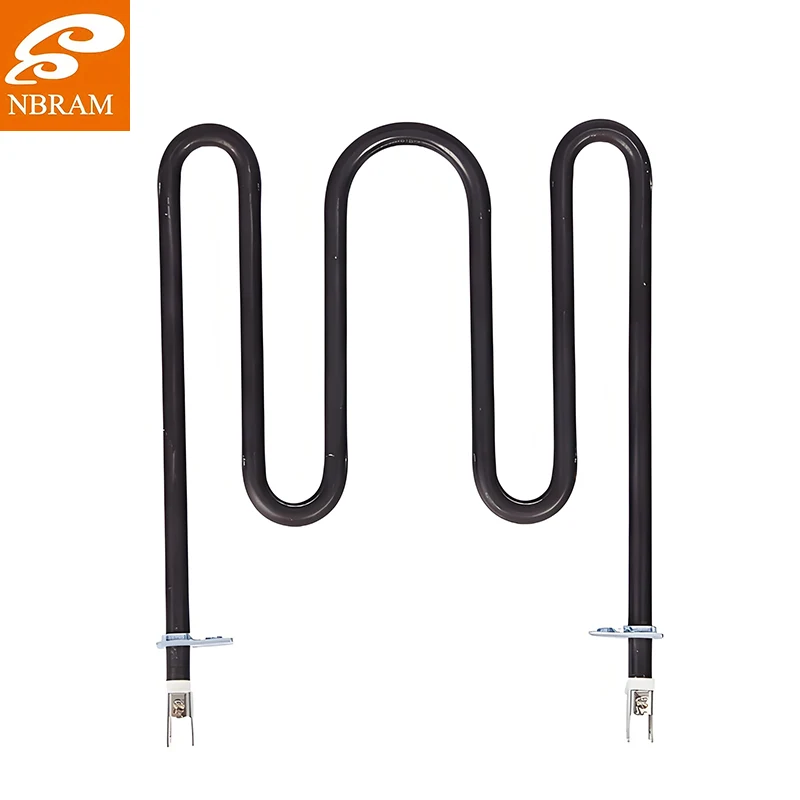Ever struggled with uneven heating in your appliances? That's exactly why we developed our M-shaped heating tube - it's like giving your heating system a geometry lesson that actually pays off. NBRAM's innovative design wraps around components like a warm embrace, eliminating cold spots that plague traditional straight tubes. When you're ready to purchase heating solutions that actually understand spatial efficiency, our M-shaped configuration delivers uniform thermal distribution that'll make your engineering team breathe easier. Trust me, I've seen these outperform conventional designs so dramatically that clients often ask if we've secretly installed extra heating elements.
I have to confess - when we first started developing the M-shaped heating tube, even I was skeptical. "Why fix what isn't broken?" I asked our design team. But then I watched our prototypes outperform straight tubes in side-by-side testing, and I became a believer. These aren't just bent tubes - they're strategically engineered thermal solutions that understand how heat actually behaves in confined spaces. The M-shape isn't arbitrary; it's the result of computational fluid dynamics simulations and countless hours of empirical testing that showed us this particular configuration maximizes heat transfer while minimizing dead zones.
I'll never forget the day our lead engineer, Old Wang, came bursting into my office with a tangled piece of bent tubing that looked like modern art gone wrong. "Look!" he exclaimed, "We've been thinking about heating all wrong!" That twisted metal became the prototype for our M-shaped heating tube, and let me tell you, the manufacturing process is anything but simple. We start with premium grade incoloy alloy that's formed using a specialized mandrel bending technique - it's like watching a metal yoga session where the tubing contorts into perfect M-shapes without kinking or thinning the walls.
What really sets our process apart is the post-forming heat treatment. While most manufacturers just anneal and call it a day, we use a proprietary stress-relief process that involves heating the formed tubes to specific temperatures and then cooling them in controlled environments that would make a NASA engineer proud. This eliminates micro-stresses that cause premature failure in lesser tubes. The result? Heating tubes that maintain their precise M-shape through thermal cycles that would make straight tubes warp and fail. Last month, one of our automotive clients reported zero failures in 50,000 units - something they'd never achieved with conventional heating elements.
Here's where our M-shaped heating tube really flexes its muscles (pun intended). The unique configuration isn't just for looks - it allows us to pack more heating surface into compact spaces than straight tubes ever could. I recently visited a medical equipment manufacturer who was struggling to heat fluid cartridges uniformly. Their straight tubes were creating hot and cold zones that affected diagnostic accuracy. We installed our M-shaped tubes that wrapped around the cartridge like a loving hug, and suddenly they had temperature consistency that made their lab technicians actually cheer.
The applications are endless: from keeping chocolate at perfect tempering temperatures in food processing equipment to maintaining precise thermal conditions in semiconductor manufacturing. The M-shape provides three-point contact that eliminates rocking or movement within assemblies - something that's crucial in vibrating environments like automotive or aerospace applications. Plus, the increased surface area means faster heat-up times and better energy efficiency. One client calculated they're saving 18% on energy costs compared to their previous straight-tube setup.
Let's talk numbers that actually matter on the production floor. Our M-shaped heating tube comes in standard lengths from 200mm to 1200mm, but here's the beauty - the M-configuration gives you effective heating length that's often 40-60% longer than the physical footprint. The tubes operate at voltages from 12V DC to 480V AC because we know real-world applications don't always follow textbook specifications.
The watt density ranges from 5W/cm² to 40W/cm² depending on the alloy composition and application requirements. We use incoloy 800, 825, or 840 alloys because they provide the perfect balance between high temperature performance and corrosion resistance. The sheath temperatures can reach up to 900°C in some configurations, but we typically recommend operating at 80% of maximum rating for longest service life. The termination options include flying leads, screw terminals, or quick-connect fittings because we understand that installation time costs money too.
